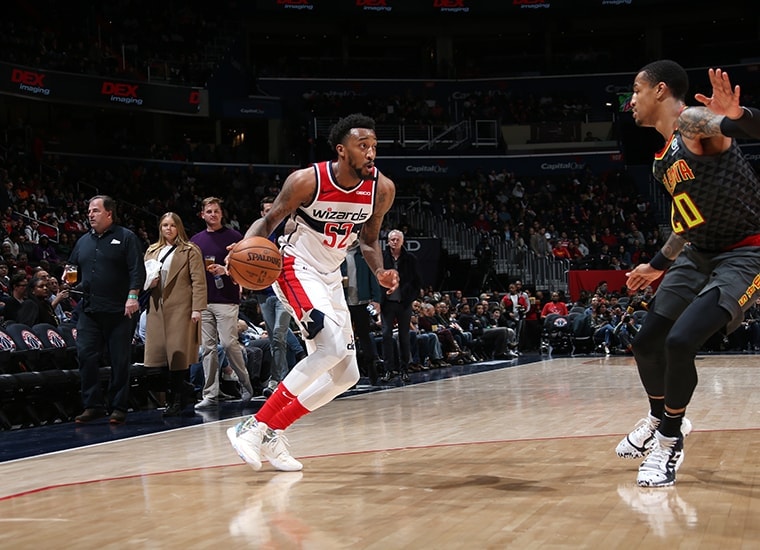During a late flurry of trades in the final hour leading up to the 2020 NBA Trade Deadline, the Denver Nuggets made one final transaction, swapping Shabazz Napier for Jordan McRae of the Washington Wizards.
Given Denver’s depth at the point guard position, swapping Napier for a bigger guard/wing in McRae makes sense for the team’s rotation heading down the stretch of the regular season. Let’s take a closer look at what the 28-year-old can provide the Nuggets.
Background on McRae
Following a four-year career at Tennessee, McRae was drafted 58th overall in the 2014 draft and has since bounced around the world, with stints in the G League, overseas and on three NBA teams. Before working his way onto the Phoenix Suns’ roster in the 2015-16 season, McRae played in Australia for Melbourne United and then transitioned to the Delaware 87ers.
Before signing with Washington back in September, McRae was playing overseas for Baskonia in Liga ACB and the EuroLeague. At 6’5”, McRae has size to play at both shooting guard or as a wing in smaller lineups. One of McRae’s most impressive physical tools is his seven-foot wingspan.
Natural scoring ability highlights McRae’s offensive game
McRae is a scorer. Nearly all of his game can be ironed down to his ability to put the ball in the basket. Judging by his performance for the Wizards this season, the Nuggets may have just traded for the best version of McRae.
In 22.6 minutes per game across 29 appearances for Washington, the 28-year-old averaged a career-high 12.8 points per game, while he also chipped in 2.8 assists per game. Additionally, he’s posted career-highs in offensive win shares and offensive box plus-minus this season.
A big part of McRae’s scoring burst has been his impressive 3-point shooting. McRae is more of a throwback scorer that relies on the mid-range, but so far he has connected on 37.7 percent of his 3.7 attempts per game from downtown.
The former second-round pick can also space the floor capably as an off-ball player as he has shot 41.7 percent from beyond the arc on catch-and-shoot opportunities.
However, as mentioned earlier, McRae’s scoring is centered around the mid-range. The combo-guard has attempted 43 percent of his shots from that area of the floor this season, compared to just 29 percent of his attempts coming from downtown and 27 percent coming around the basket.
Although he has only shot 33 percent from the mid-range this season, McRae shot 53 percent during the 2018-19 campaign (in a limited sample size of 21 games). Plus, McRae’s above-average 3-point shooting this season has helped offset some struggles inside the arc. Given Denver’s offensive structure that thrives in the mid-range, McRae should certainly fit in as a scoring punch off the bench when the Nuggets need a boost.
Turning the attention to the defensive end, although McRae hasn’t developed a reputation on that end of the floor, he is enjoying a more active season. He has posted career-highs in block percentage (1.1 percent) and defensive rebound percentage (13.1 percent), while Washington’s defense was 3.3 points per 100 possessions better with him on the court this season.
As mentioned above, McRae has great length and wingspan for his position, which allows him to contest shots and disrupt passing lanes. With Torrey Craig, Gary Harris and Jerami Grant in Denver’s rotation, McRae won’t be tasked with guarding the opposition’s best offensive players, thus providing him with more opportunities to focus on spacing the floor and providing buckets on the offensive end.
